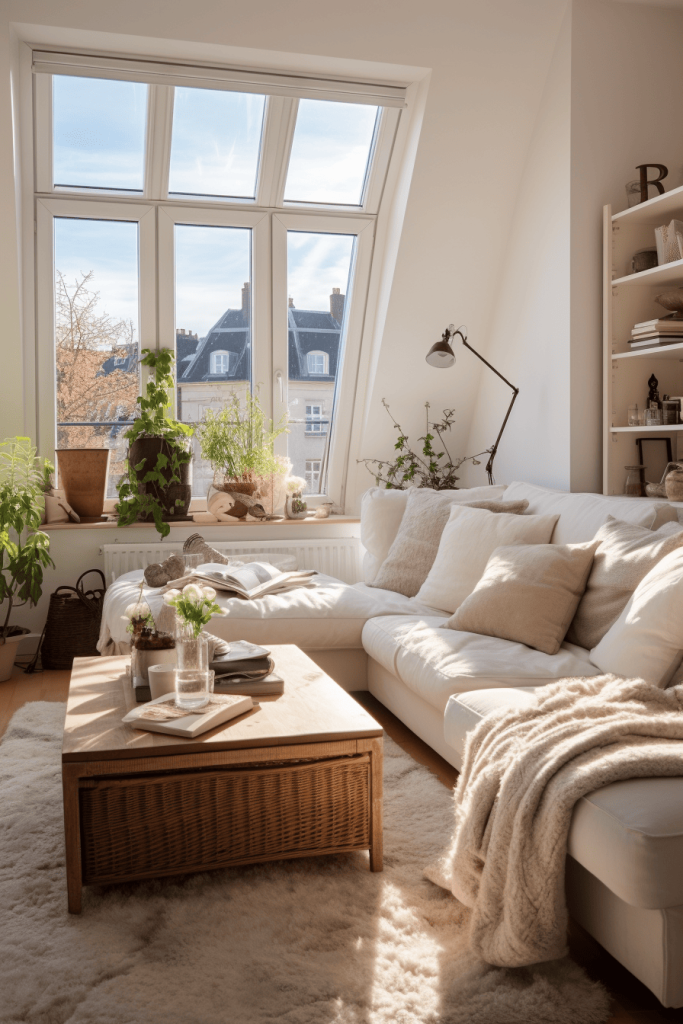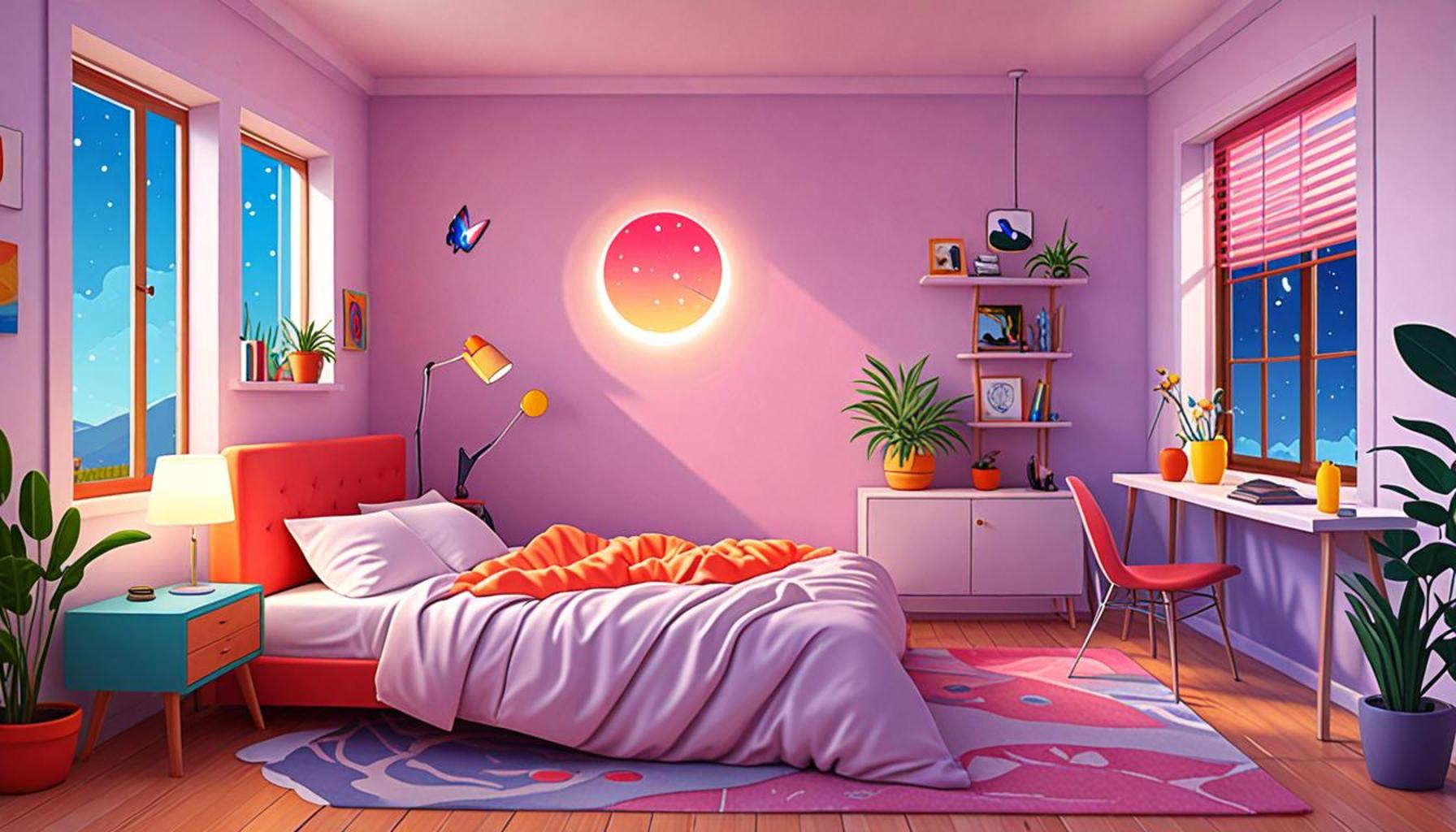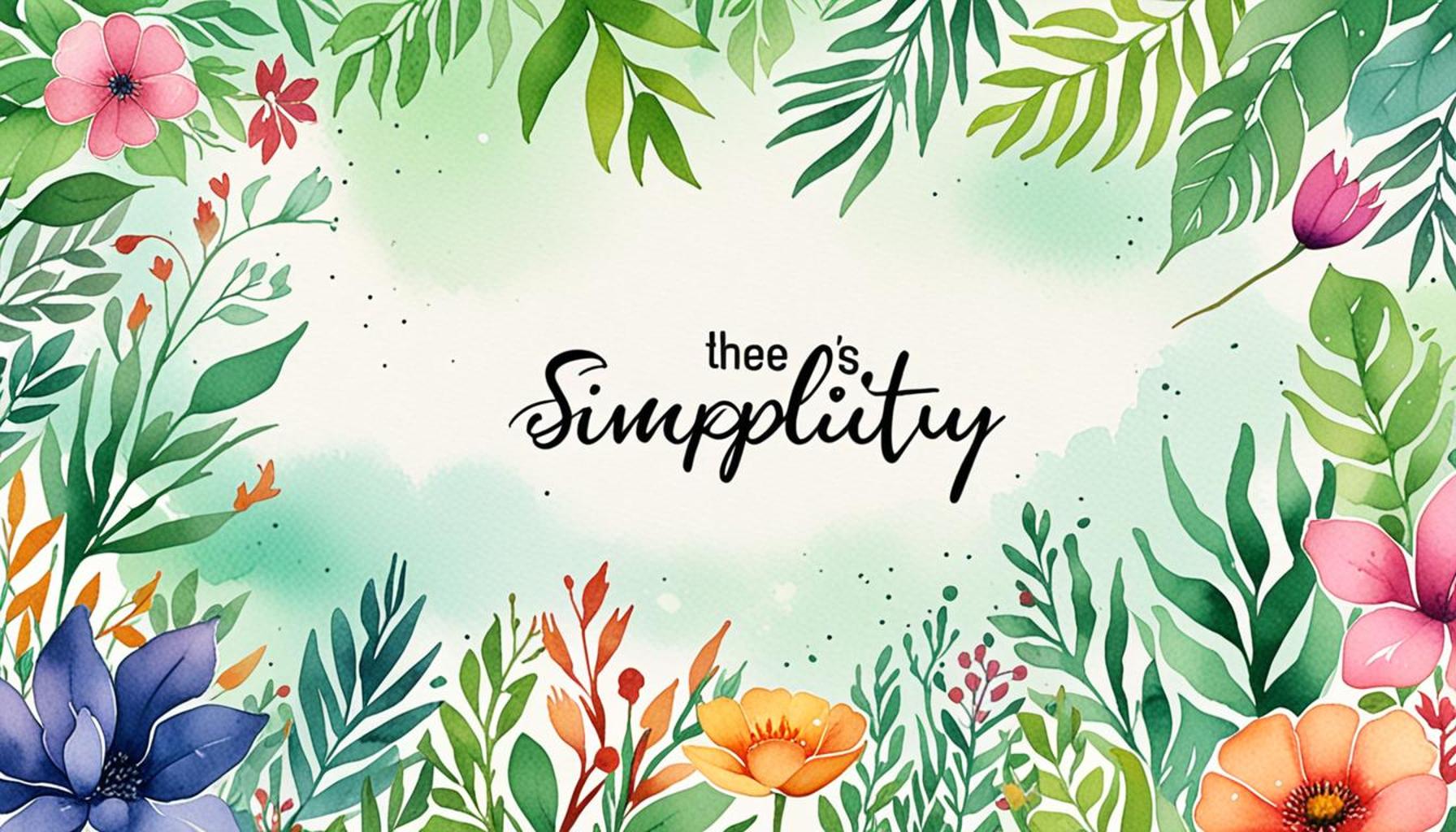How to Create a Minimalist Environment: Tips to Transform Your Space into a Calm Refuge

Creating Peaceful Spaces
In our fast-paced world, the need for calm and tranquility has never been more vital. Embracing a minimalist environment can offer a transformative escape that nurtures both the mind and spirit. This guide will explore practical steps to help you create a serene space that resonates with peace.
Why Consider Minimalism?
Minimalism is not merely about decluttering; it’s about creating a harmonious living space that promotes well-being. The principles of minimalism extend beyond aesthetics, offering a holistic approach that can positively affect various aspects of your life. Consider these benefits:
- Reduced stress: A clutter-free environment leads to a cleaner mental state. For instance, studies indicate that people who live in organized spaces experience lower levels of anxiety and are better equipped to handle day-to-day stresses.
- Increased productivity: A simplified space fosters focus and creativity. By minimizing distractions, individuals can immerse themselves fully in tasks, ultimately enhancing efficiency. This can be particularly beneficial in a bustling Nigerian metropolis like Lagos, where the sensory overload can easily become overwhelming.
- Enhanced aesthetics: A minimalist environment can be visually pleasing and calming. Neutral colors, natural materials, and intentional design choices create a soothing atmosphere that is both inviting and functional.
Getting Started with Your Transformation
Transforming your space into a calm refuge involves thoughtful planning and execution. Here are some initial steps you can take to begin this journey:
- Assess your belongings: Identify items that spark joy versus those that create chaos. This assessment can be as simple as placing items in two distinct categories: keep and donate or discard. In Nigeria, local charities often appreciate contributions, making it easier to part with items you no longer need.
- Choose a color palette: Soft, neutral tones can promote relaxation. Colors like beige, soft white, or gentle pastels evoke a sense of calm and spaciousness, which contrasts with more vibrant colors that may stimulate the senses too much.
- Maximize natural light: Bring in as much daylight as possible for an uplifting atmosphere. Consider strategic placement of mirrors to reflect light and open up spaces, or use sheer curtains that maintain privacy while allowing light to filter in.
By understanding the principles of minimalism, you can curate a space that not only looks good but feels good. A peaceful haven in your home may also inspire you to seek tranquility in other areas of your life. As you implement these strategies, remember that the journey to minimalism is personal and should reflect your unique tastes and needs. Let’s dive deeper into how you can achieve this tranquil retreat, exploring further ideas, resources, and techniques to enhance your serene space.
RECOMMENDED: Check out this similar article

Essential Steps to Embrace Minimalism
Creating a minimalist environment can seem daunting, but with deliberate steps, it can evolve into an enjoyable experience. The key to success lies in understanding that minimalism is a journey rather than a destination. Here are some essential steps to help guide you as you transform your space into a peaceful retreat:
Decluttering Techniques
One of the first and most significant steps in establishing a minimalist environment is decluttering. This process goes beyond merely tidying up; it involves a conscious examination of what truly adds value to your life. Consider applying the following techniques:
- The 90/90 Rule: For each item, ask yourself if you have used it in the last 90 days or if you will use it in the next 90 days. If the answer is no, it may be time to consider letting it go.
- One in, One out policy: For every new item you bring into your space, commit to removing one. This practice encourages mindful consumption and helps maintain the balance of your environment.
- Room-by-room approach: Tackling one space at a time can prevent overwhelm. Focus on a single room or area, such as your living room or workspace, and apply the methods above to declutter efficiently.
Furnishing with Intention
Once you have decluttered, the next step is to furnish your minimalist environment with intention. Each piece should serve a purpose and contribute to the overall serenity of the space. Here are some tips:
- Choose multi-functional furniture: In small Nigerian apartments, where every inch counts, invest in furniture that can fulfill multiple roles. For instance, a coffee table that also serves as storage allows you to maximize style and functionality.
- Limit decor items: Embrace the philosophy of “less is more.” Consider only displaying memories, art, or decor that resonates with you. A single African artifact or a painting can speak volumes when thoughtfully placed.
- Invest in high-quality pieces: Rather than filling your space with quantity, prioritize quality. Select items that are well-made and timeless, increasing longevity and minimizing the need for constant replacement.
By applying these straightforward yet effective techniques, you set the foundation for a minimalistic sanctuary in your home. The transformative power of minimalism lies not just in visual aesthetics but in creating a space that encourages relaxation, productivity, and joy. As you embark on this journey, take a moment to appreciate and embrace the simplicity that minimalism can afford in your life.
Design Elements to Enhance Your Minimalist Space
Creating a minimalist environment goes beyond just decluttering; it involves strategically choosing design elements that foster tranquility and clarity. Here, we delve into some key aspects that can significantly impact your minimalist space.
1. Color Palette
When aiming for a calm refuge, the colors you choose play a crucial role. Soft, neutral tones such as whites, grays, and beiges can create an inviting ambiance. Incorporating muted pastels also adds a touch of warmth without overwhelming the senses. You can achieve harmony by limiting your color scheme, making it easier for the eye to navigate the space.
2. Natural Light
Another vital element is natural light. Maximizing daylight not only enhances the visual appeal of your environment but also contributes to a sense of well-being. Consider sheer curtains that allow light to filter through without compromising privacy. Positioning mirrors across from windows can further amplify this effect, creating the illusion of a larger space filled with brightness.
3. Essential Furniture
When furnishing your minimalist environment, select pieces that serve multiple purposes and bring functionality into focus. Consider a sleek sofa bed or a coffee table with additional storage. Each item should have a reason to exist in your space. Aim for clean lines and simplicity in design to maintain the uncluttered aesthetic.
4. Thoughtful Decor
Less is more when it comes to decor. Focus on a few key pieces that provoke thought or emotion rather than crowding surfaces with various items. This could be a single piece of modern art or a thoughtfully placed plant that introduces an organic element. Not only do plants purify the air, but they also enhance the connection to nature, fostering a serene atmosphere.
5. Creating Zen Zones
In a minimalist environment, designate zones that cater to specific activities. A quiet reading corner with a simple chair and a small bookshelf can serve as a meditation or relaxation area. This intentional zoning helps maintain organization while promoting mindfulness, essential elements in a calm refuge.By integrating these design elements, you can effectively transform your space into a minimalist haven. A well-thought-out environment encourages mental clarity and serves as a soothing backdrop for daily activities. As you keep refining your minimalist approach, remember that the goal is to cultivate a space that resonates peace and simplicity.
ADDITIONAL INSIGHTS: Expand your understanding here
Cultivating a Mindful Atmosphere
After decluttering and furnishing with purpose, the next cornerstone of minimalism involves creating a mindful atmosphere. This is about leveraging the senses to foster a serene environment. By focusing on sound, scent, light, and texture, you can enhance the calming effect of your minimalist space. Here are some strategies to consider:
Soundscapes for Serenity
Sound plays a significant role in how we experience our environment. In an increasingly noisy world, embracing calming soundscapes can elevate your minimalist retreat. Here are some ways to achieve this:
- Natural sounds: Incorporate elements like the gentle sound of a water fountain or soft wind chimes. They can evoke peace and tranquility, reminiscent of serene Nigerian landscapes.
- Music selection: Curate playlists that feature ambient, instrumental, or acoustic music. Artists like Femi Kuti or Sade Adu could provide soothing vibes while maintaining cultural roots.
- White noise machines: In urban settings, noise pollution can disrupt peace. White noise machines or apps can mask disruptive sounds, creating a tranquil space for focus and relaxation.
Light: An Essential Element
The quality of light in your space can significantly influence its atmosphere. Here’s how to optimize lighting for a minimalist environment:
- Maximize natural light: Open curtains and blinds to let sunlight fill your space. Consider homes with large windows that invite natural illumination, an ideal aspect for a home in the sunny climate of Nigeria.
- Utilize warm, soft lighting: Instead of harsh overhead lights, use warm-toned bulbs in lamps to create a cozy atmosphere. Floor lamps and sconces provide supplementary light without overwhelming spaces.
- Smart lighting systems: Invest in smart bulbs that allow you to adjust brightness and color temperature. This technology empowers you to customize your space based on mood, enhancing both comfort and aesthetics.
Textures that Speak Peace
In a minimalist environment, textures can communicate warmth and comfort. With careful selection, texture can elevate simplicity without cluttering the mind:
- Soft fabrics: Incorporate cushions and throws in soft, natural fabrics like cotton or linen. These materials are breathable and align with a minimalist ethos of comfort without excess.
- Natural elements: Wood or bamboo furniture, clay pots, and jute rugs bring an organic feel. Their tactile quality contrasts beautifully with sleek, modern lines common in minimalism.
- Artisanal touches: Utilizing handcrafted pieces from local artisans not only supports the community but brings a unique texture and story to your minimalist space.
Integrating sound, light, and texture mindfully creates a serene atmosphere that complements your minimalist efforts. This attention enhances the quality of your space, transforming it into a true refuge amidst the hustle of daily life. Minimalism is not merely about fewer things; it’s about crafting an environment that nurtures peace and promotes wellbeing.
SEE ALSO: Click here to read another article
Embracing Minimalism for Enhanced Wellbeing
Creating a minimalist environment is more than just an aesthetic choice; it is a profound lifestyle shift aimed at fostering peace and clarity in our often chaotic lives. By implementing strategies like decluttering, thoughtfully selecting furniture, and cultivating a mindful atmosphere through sound, light, and texture, you transform your space into a true calm refuge. The simple act of reducing visual and sensory overload creates a sanctuary where your mind can breathe and focus.
In Nigeria, where the vibrant energy of urban life can often feel overwhelming, adopting minimalism offers a sanctuary from the outside world. Utilizing natural elements and local craftsmanship can ground your space in cultural richness while preserving a minimalist aesthetic. As you embrace this approach, remember that minimalism does not imply sacrificing comfort; rather, it invites deliberate choices that enhance your quality of life.
Ultimately, by investing time and effort into refining your environment, you actively engage in crafting a sanctuary that promotes wellbeing, creativity, and serenity. The journey to minimalism is personal, and each step you take can bring you closer to a life filled with intention and tranquility. Dive deeper into this transformative lifestyle, explore local resources, and discover how a minimalist space is not just a design choice but a profound way to live harmoniously within your surroundings.



